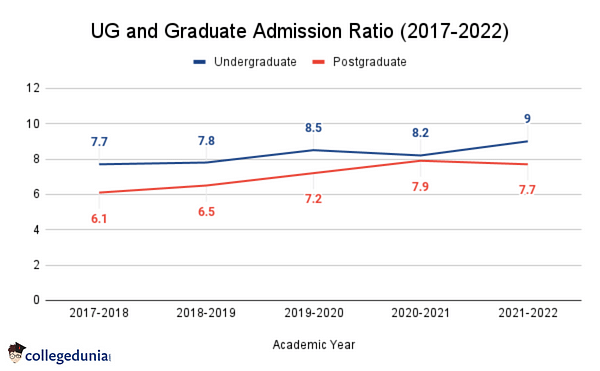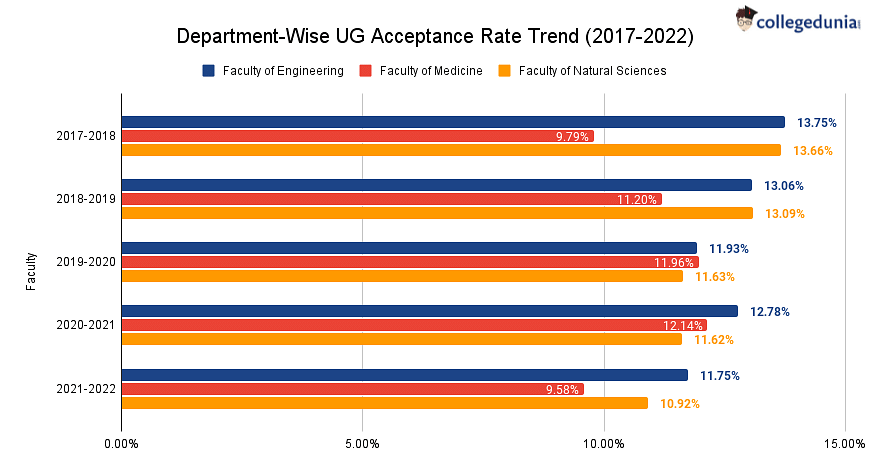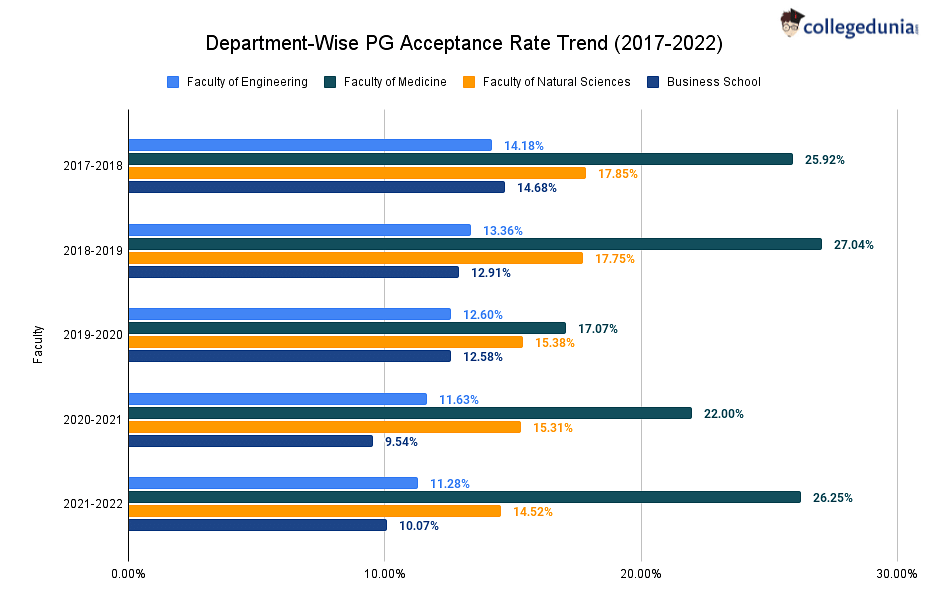Imperial College London acceptance rate, as of 2022, was recorded to be 12%, indicating that gaining admission to this prestigious institution is highly competitive. Imperial College London is widely recognized as one of the leading institutions of higher education in the world. With a long history of academic excellence, the university has a reputation for producing some of the brightest minds in various fields of study.
As such, it is no surprise that Imperial College London is a popular choice for prospective students from around the globe. However, with such high demand, the university's low acceptance rate is often a point of concern for applicants. Now let’s look at the competition one has to be part of in order to get admission at Imperial College London:
Imperial College London UG and Graduate Admission Ratio

The above-given graph above depicts the 5-year trend of the ratio of applicants to that for each seat at UG and PG level. As we look at the trend from 2017-2022, the competition has increased considerably both for UG and PG courses.
As of 2022, nearly 8 students competed for a single UG seat at Imperial College, while for a single PG seat, 7 students competed for a single seat. Thus, you need to be mindful of the requirements for admission to Imperial College London to get an edge over others.
Imperial College London UG Acceptance Rate (Department-wise)
Furthermore, you must be curious to know about the Imperial College's acceptance rate for different departments so that you can plan accordingly. Here we have brought to you the five-year trend of the department-wise acceptance rate, respectively for UG and PG students.

As we look at the data presented in the above-given graph, it can be inferred that over a span of 5 years (2017-2022), the competition for UG applicants has shot up considerably as the recent acceptance rate stands at 11.75% for Engineering, 9.58% for Medicine and 10.92% for Natural Sciences.
Imperial College London PG Acceptance Rate (Department-wise)

In contrast to the acceptance rate of UG courses, the PG courses seem to have a better acceptance rate. As we can infer from the above-given graph that how over a span of 5 years (2019-2022), the acceptance rate fo admission to the Faculty of Medicine has spiked up sharply to 26.25%, while the acceptance rate for the Faculty of Engineering, Natural Science and Business School has almost been similar, i.e, 11.28%, 14.52%, and 10.07%, respectively.
Factors Affecting Acceptance to Imperial College London
Imperial College London acceptance rate is influenced by various factors beyond just academic qualifications, which are essential for admission to this premier UK institute. To increase their chances of admission, applicants should consider the following factors:
Academic Reference
Academic references are an important source of information about an applicant, providing insight into their academic background, suitability for the program, and experiences gained to date. These references are used by selectors to determine whether to invite the candidate for an interview.
Interview
All applicants are interviewed as part of the selection process before being offered a place.
Personal Statement
The personal statement is a crucial element of the application process, as it demonstrates the applicant's interest in pursuing a particular program and their potential contributions to the institution's reputation. Applicants should outline their relevant experiences, including books they have read, work or volunteer experience, and extracurricular activities.
Research Topic (PG Research)
For PG research programs, applicants must identify their research interests and report them to the relevant department. This helps selectors evaluate an application based on the prospects of the research the applicant wishes to pursue.







Comments